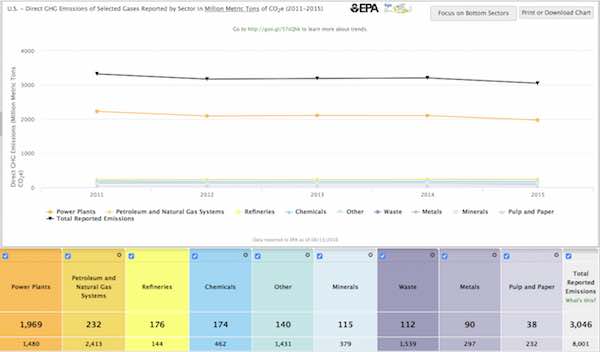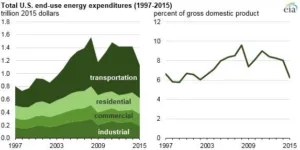As an inhabitant of this planet with children to care for, climate change is on my mind every time some weather catastrophe hits somewhere on the globe. With two major hurricanes hitting the US within a couple of weeks one starts to think that besides political discussions whether climate change is a real thing or not, we really have to think if what we do could reek havoc on our global climate system.

If we follow the thinking of the vast majority of meteorologists, human mankind is contributing to climate change no matter what we want to believe. In case you do not believe in climate change, just skip this article for today.
If we follow the many years of research in this field we may come to the conclusion that industrial development is one of the culprits of the global warming trend we are seeing today. Industrial development includes all forms of high tech gadgets including displays, our main topic here at Display Daily. When I was reflecting on how every single one of us contributes to climate change and what everyone can do to slow down and reverse the trend, it occurred to me that displays also maybe a contributor to climate change. They use electric energy and a good portion of this electric energy is derived from burning fossil fuels.
Displays are getting more more energy efficient
After reflecting a little bit more I felt not as bad, as the display industry has made big strides in developing new technologies that use less and less energy and still provide better images. Growing up with CRTs and witnessing the changeover to LCD and OLED, displays have become more and more energy efficient. Even backlights have been switched from fluorescent light bulbs to LEDs in TVs, monitors, and mobile devices. Projectors are moving from light bulbs to LEDs and laser and doing their part to be more energy efficient.
I felt so good that I thought there must be a statistic somewhere that shows how energy usage of consumer electronics is declining for decades. Needless to say I couldn’t find any such statistic. While that by itself doesn’t mean that this idea is not true it does mean that one has to look at other statistics to verify this development.
USA Energy Usage according to EIA
If there are no statistics for the declining use of energy for consumer electronics lets try to look at the larger picture. As shown in the first figure provided by the EIA (US Energy Information Administration), expenditure for energy in the USA has actually been declining since about 2008. This is true for all segments and not just for the industrial and transportation sectors. In addition looking at the actual energy usage data there is a slight decline of energy generation by electric utilities that corresponds with the expenditure curve, even if the decline of generated electric energy is a little smaller measured in percentage terms. Costs went down about 35% while generation only went down by about 15 – 20%.
 USA Greenhouse Gas Emissions by Source provided by EPA
USA Greenhouse Gas Emissions by Source provided by EPA
Even with that decline, the second chart provided by the EPA (US Environmental Protection Agency) shows how the greenhouse gas emissions are driven mostly by power plants. The good news is that power plants have been lowering their greenhouse gas emissions since 2011. So how much energy actually goes into homes and maybe used for consumer electronics? According to a chart from Lawrence Livermore Laboratory, in 2012 US residential use amounted to less than 10% of all energy use and 4% of electric energy respectively.
Consumer electronics maybe using about 10% of the total residential electric energy usage according to a statistic from the EIA published in 2017. This would amount to about 0.47 x 1015 BTU. Not a small number by any means. This is how far I am willing to go into the discussion of power plants and their efficiencies, but by all means we are talking significant numbers here and I am still not any closer to determine whether displays are using more or less energy than 10 years ago.
Energy efficient savings do not translate in less energy use
So let us look at this from a different perspective. In almost every display product we have two developments acting in different directions. Whenever the the display technology makes the display more energy efficient, device makers use this development to make displays larger and brighter. In other words, when we increase the energy efficiency we can keep the display performance at the same level and actually use less energy for the same device or we increase display size and brightness and end up with a display that uses the same or even more energy than the display with less efficient technology.
This development is driven by consumer demand and marketing efforts to sell more products. For example smartphones do have an issue with battery life and consumers will agree that longer is better. At the same time we all want more performance, a brighter and larger display. How is this achieved? While the performance of the components is getting better from year to year in most cases the battery size has also increased. A bigger battery with the same battery life translates into more energy consumption by the mobile device. This is something that we all are willing to accept as many studies show that we still only pay pennies for charging our smartphone every day for a year. Nevertheless, more energy use also drives greenhouse gas emissions and in the end climate change. If we have issues with greenhouse gas emissions, every little bit counts in the end. It is the overall trend that is important of the future.
 Smartphone Screen Size Development provided by Alex Barredo, @somospostpc
Smartphone Screen Size Development provided by Alex Barredo, @somospostpc
Take a look at the chart provided by Alex Barredo, which shows that screen sizes of smartphones have been increasing constantly since 2007. The question is whether this can continue in coming years? According to this chart by 2020 the average smartphone will have reached the size of a tablet, which will definitely not work well for tablet sales and pocket sizes.
Similar developments have taken place with the brightness of projectors and screen sizes of TVs. Whenever the energy efficiency has increased, the energy usage of the device may have possibly even gone up, if the increase in brightness and size outweighed the gain through better efficiency. If you are aware of any statistics that quantitatively compares this in any consumer electronics segment, please let me know. I would be delighted to get back to this topic with more real world data.
After thinking about this for a bit I am really not sure where we are on this topic. Maybe we are driving down energy use in consumer electronics, maybe not. All in all the global climate will let us know in what direction this is going, good or bad it is all up to us. NH

